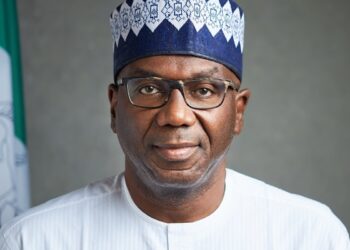
As Nigeria enters the rainy season, the federal government has raised a red flag over possible widespread flooding that could affect thousands of communities across the country. According to the 2025 Annual Flood Outlook (AFO) released on Thursday in Abuja, at least 2,187 communities in 293 Local Government Areas (LGAs) face moderate flood risks, while 1,249 communities in 176 LGAs are classified as high-risk zones.
The forecast, presented by the Minister of Water Resources, Prof. Joseph Utsev, was compiled by the Nigeria Hydrological Services Agency (NIHSA) under the theme “Flood Resilience: Focusing on Communities Preparedness and Adaptive Strategies for Flood Management.”
States on High Alert
Thirty states and the Federal Capital Territory (FCT) fall within the high flood risk zones, including:
Abia, Adamawa, Akwa Ibom, Anambra, Bauchi, Bayelsa, Benue, Borno, Cross-River, Delta, Ebonyi, Edo, Gombe, Imo, Jigawa, Kebbi, Kogi, Kwara, Lagos, Nasarawa, Niger, Ogun, Ondo, Osun, Oyo, Rivers, Sokoto, Taraba, Yobe, Zamfara, and FCT.
Flooding is expected to peak between July and September, affecting 549 communities in 114 LGAs across 30 states, with additional threats continuing into October and November.
Prof. Utsev also warned of increased flash and urban flooding, especially in major cities. Poor drainage, unmanaged waterways, and lack of infrastructure have left many urban centers vulnerable.
“Flooding remains one of Nigeria’s most devastating natural disasters. With climate change worsening its frequency and severity, we must act,” the Minister said.
Beyond Forecasting: AFO’s Three-Part Plan
The 2025 AFO has been structured into three key publications:
- Flood Forecast – Provides an overview of the expected scenarios this year.
- Flood Risk Communication – Outlines how to turn forecasts into actionable community strategies.
- Flood Mitigation and Adaptation – Details steps and programs needed to reduce exposure to flood hazards.
NEMA and Other Agencies Step Up
The National Emergency Management Agency (NEMA) has activated its early warning system to alert vulnerable communities and improve preparedness. According to NEMA spokesperson Mr. Ezekiel Manzo, the agency will also distribute emergency equipment and adopt digital tools to better manage flood-related emergencies.
“This outlook isn’t just about numbers—it’s about protecting lives and livelihoods,” added Richard Pheelangwah, Permanent Secretary of the Ministry of Water Resources and Sanitation.
Targeting Real-Time Response
NIHSA Director-General, Dr. Umar Ibrahim Mohammed, said this year’s report goes deeper by identifying specific communities, not just LGAs, and examining flood impacts on health, education, agriculture, and infrastructure.
“We’re turning data into decisions—this is not just forecasting, it’s a plan for resilience,” Mohammed noted.
While officials urge the public not to panic, they emphasize the importance of taking early warnings seriously. Communities are advised to prepare ahead, avoid flood-prone areas, and engage with local authorities for safety planning.



















